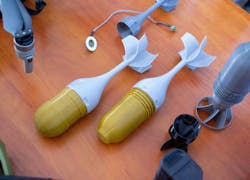Researchers choose SwRI to find ways of helping predict the structural life of 3D-printed military parts
ARLINGTON, Va. – U.S. military researchers needed to boost the use of additive manufacturing -- also called 3D printing -- for critical structural parts by developing the ability to predict the life and viability of 3D-printed parts during manufacturing. They found a solution from the Southwest Research Institute (SwRI) in San Antonio, Texas.
Officials of the U.S. Defense Advanced Research Projects Agency (DARPA) in Arlington, Va., announced a $6.2 million contract to SwRI on Wednesday for the Structures Uniquely Resolved to Guarantee Endurance (SURGE) program.
Rethinking additive manufacturing
SURGE seeks to rethink and accelerate distributed additive manufacturing of critical structural military parts by developing ways to predict part life directly from data collected during additive manufacturing in a way that is transferable across disparate machines, materials, locations, and geometries.
The program will merge in-situ sensing technologies, process modeling, and microstructure-based fatigue-life methods to quantify the useful life of 3D-printed hardware. Predictions will come from extensive experimental validation.
Related: The dawn of military 3D printing
The SURGE program aims to demonstrate an alternative path to the current machine-focused paradigm of part qualification in additive manufacturing.
3D printing today works to perfect the operation of individual additive manufacturing machines to produce material repeatably with known properties through months or years of process optimization and material property testing at a cost that easily can surpass millions of dollars, researchers say.
Predictable life cycles
Instead, SURGE will explore a new approach where the structural life of every unique manufactured component is predicted on the fly, with the goal of producing any part geometry on any machine, anywhere in the world, at any time, while guaranteeing part life.
For more information contact Southwest Research Institute online at www.swri.org, or DARPA at www.darpa.mil/research/programs/structures-uniquely-resolved-guarantee-endurance.

John Keller | Editor-in-Chief
John Keller is the Editor-in-Chief, Military & Aerospace Electronics Magazine--provides extensive coverage and analysis of enabling electronics and optoelectronic technologies in military, space and commercial aviation applications. John has been a member of the Military & Aerospace Electronics staff since 1989 and chief editor since 1995.

